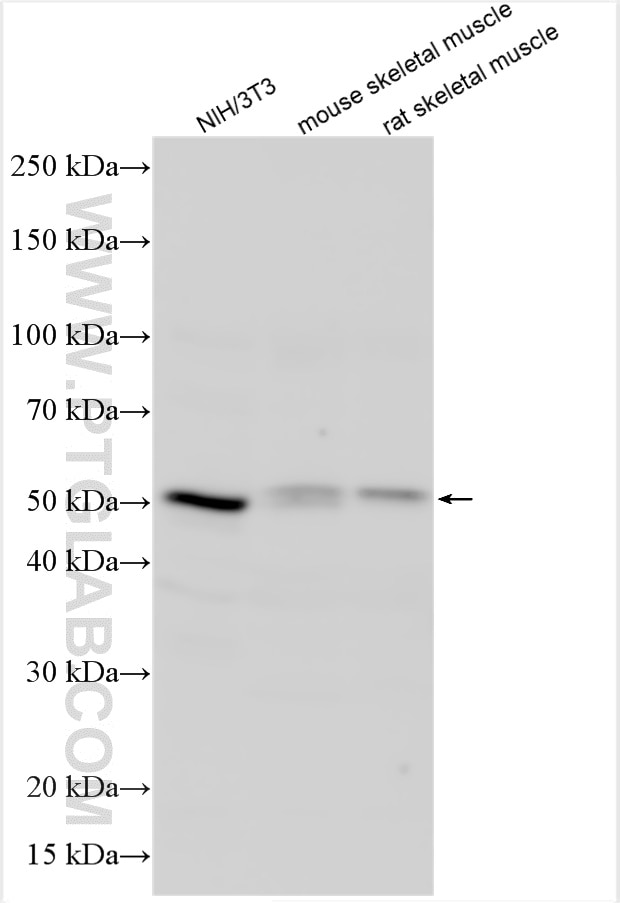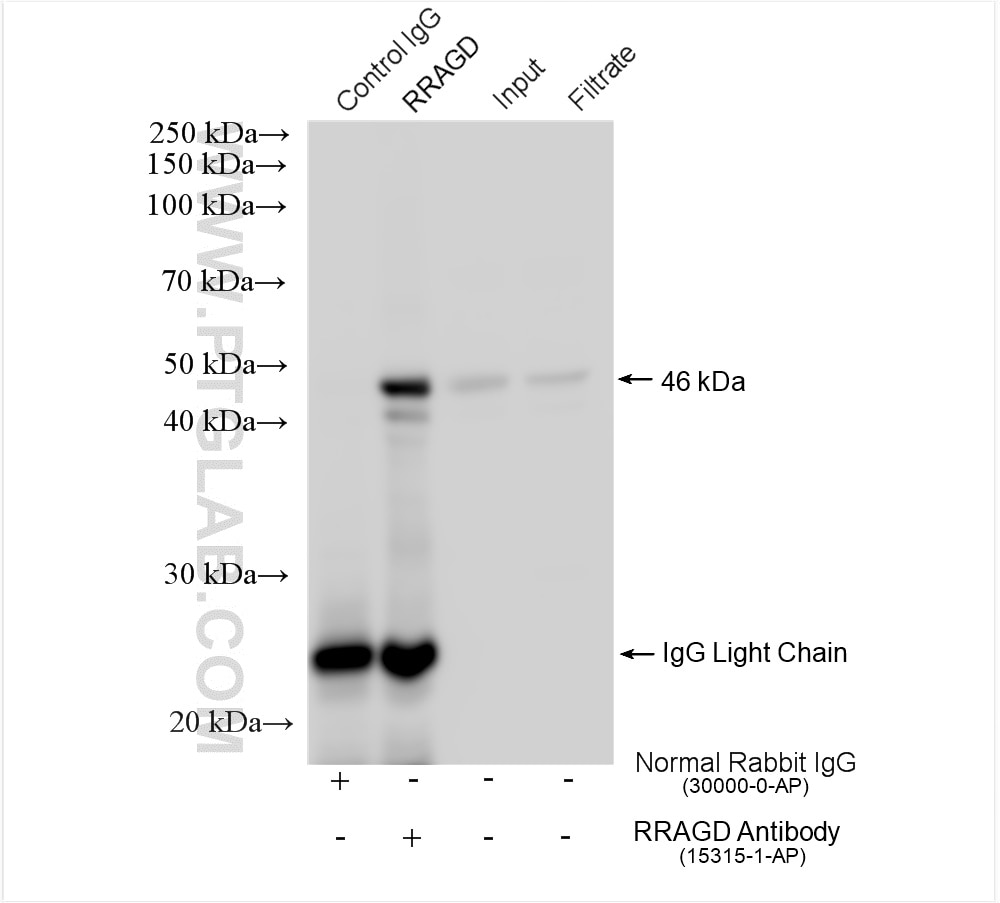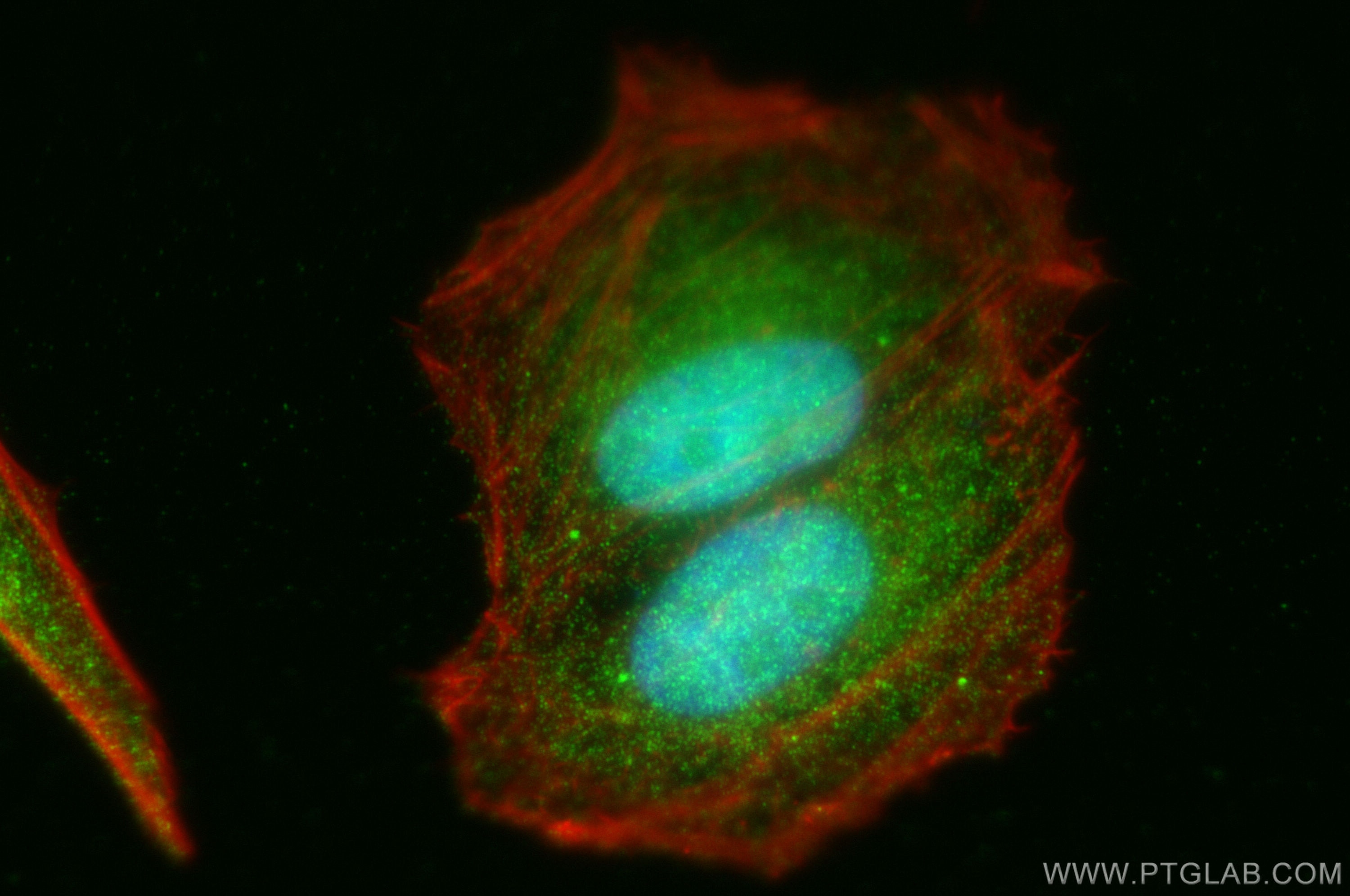RRAGD Polyklonaler Antikörper
RRAGD Polyklonal Antikörper für WB, IF/ICC, IP, ELISA
Wirt / Isotyp
Kaninchen / IgG
Getestete Reaktivität
human, Maus, Ratte
Anwendung
WB, IF/ICC, IP, ELISA
Konjugation
Unkonjugiert
Kat-Nr. : 15315-1-AP
Synonyme
Geprüfte Anwendungen
| Erfolgreiche Detektion in WB | NIH/3T3-Zellen, Maus-Skelettmuskelgewebe, Ratten-Skelettmuskelgewebe |
| Erfolgreiche IP | NIH/3T3-Zellen |
| Erfolgreiche Detektion in IF/ICC | HepG2-Zellen |
Empfohlene Verdünnung
| Anwendung | Verdünnung |
|---|---|
| Western Blot (WB) | WB : 1:500-1:1000 |
| Immunpräzipitation (IP) | IP : 0.5-4.0 ug for 1.0-3.0 mg of total protein lysate |
| Immunfluoreszenz (IF)/ICC | IF/ICC : 1:200-1:800 |
| It is recommended that this reagent should be titrated in each testing system to obtain optimal results. | |
| Sample-dependent, check data in validation data gallery | |
Produktinformation
15315-1-AP bindet in WB, IF/ICC, IP, ELISA RRAGD und zeigt Reaktivität mit human, Maus, Ratten
| Getestete Reaktivität | human, Maus, Ratte |
| Wirt / Isotyp | Kaninchen / IgG |
| Klonalität | Polyklonal |
| Typ | Antikörper |
| Immunogen | RRAGD fusion protein Ag7557 |
| Vollständiger Name | Ras-related GTP binding D |
| Berechnetes Molekulargewicht | 46 kDa |
| Beobachtetes Molekulargewicht | 46-50 kDa |
| GenBank-Zugangsnummer | BC003088 |
| Gene symbol | RRAGD |
| Gene ID (NCBI) | 58528 |
| Konjugation | Unkonjugiert |
| Form | Liquid |
| Reinigungsmethode | Antigen-Affinitätsreinigung |
| Lagerungspuffer | PBS with 0.02% sodium azide and 50% glycerol |
| Lagerungsbedingungen | Bei -20°C lagern. Nach dem Versand ein Jahr lang stabil Aliquotieren ist bei -20oC Lagerung nicht notwendig. 20ul Größen enthalten 0,1% BSA. |
Hintergrundinformationen
Ras-related GTP-binding protein D (RRAGD) is a monomeric GTP or GDP binding protein, which plays a critical role in mediating amino acid stimulated mTOR signaling pathway, a key pathway in determination of cell growth and proliferation rate. Recently, RRAGD has been reported involving the progression of ovarian cancer and colon cancer.
Protokolle
| PRODUKTSPEZIFISCHE PROTOKOLLE | |
|---|---|
| WB protocol for RRAGD antibody 15315-1-AP | Protokoll herunterladen |
| IF protocol for RRAGD antibody 15315-1-AP | Protokoll herunterladen |
| IP protocol for RRAGD antibody 15315-1-AP | Protokoll herunterladen |
| STANDARD-PROTOKOLLE | |
|---|---|
| Klicken Sie hier, um unsere Standardprotokolle anzuzeigen |




